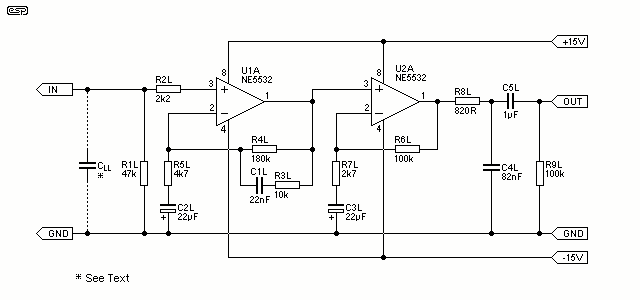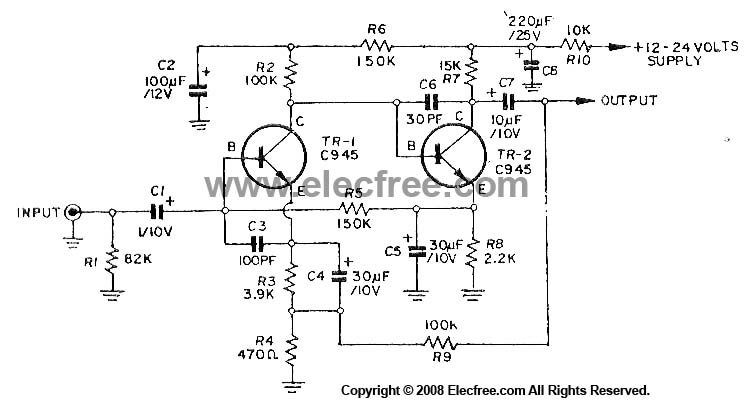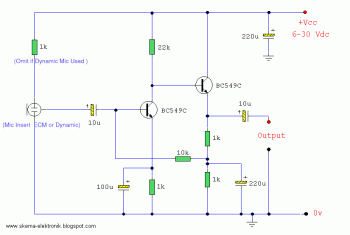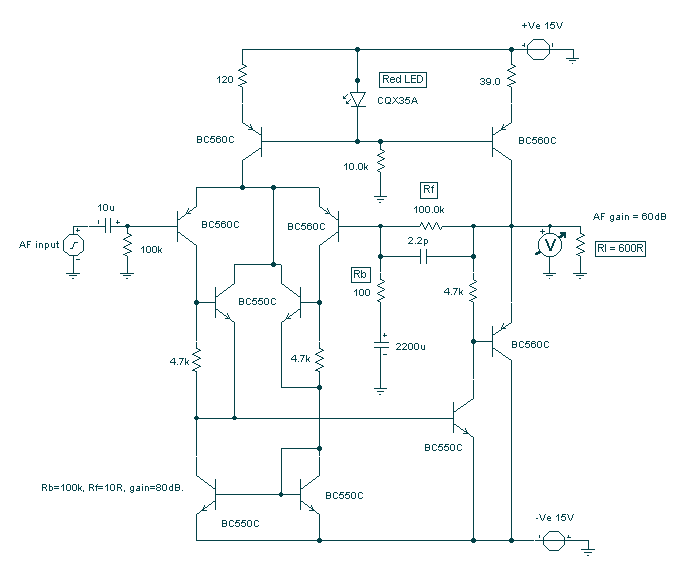
Phono Preamplifier
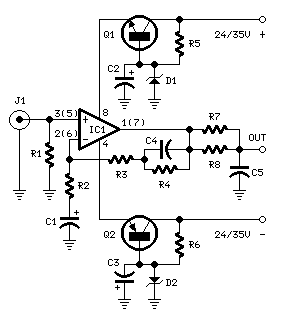
In recent years, following CD's introduction, vinyl recordings are almost disappeared. Nevertheless, a phono preamplifier is still useful for listening to old vinyl discs from a well-preserved collection. This simple but efficient circuit devised for cheap moving-magnet cartridges can be used in connection with the audio power amplifiers shown in these webpages, featuring low noise, good RIAA frequency response curve, low distortion, and good high-frequency transients behavior due to passive equalization in the 1 to 20KHz range.
The circuit under discussion is a phono preamplifier, specifically designed to amplify the signal from a moving-magnet cartridge, commonly found in vinyl record players. This device is critical in the playback of vinyl records as it amplifies the tiny voltages generated by the cartridge to a level suitable for further amplification by a power amplifier.
The primary characteristics of this circuit include low noise, a desirable feature in audio applications to ensure the clarity and integrity of the sound. Additionally, it boasts a good RIAA frequency response curve, which is an industry-standard equalization curve used in the reproduction of vinyl records to reduce noise and distortion.
The low distortion characteristic of this circuit ensures that the amplified signal remains as true to the original as possible, avoiding the introduction of unwanted harmonics that could degrade the audio quality. Furthermore, the circuit exhibits good high-frequency transient behavior, which is important for accurately reproducing the quick changes in the audio signal that are common in music and speech.
The passive equalization in the 1 to 20KHz range, which is the typical frequency range of human hearing, allows for a more natural and balanced sound. This is achieved by adjusting the amplification of different frequencies to match the response of the human ear, which is not linear across the frequency spectrum.
In conclusion, this phono preamplifier circuit is a simple yet effective solution for those who still enjoy the unique sound of vinyl records. Its design considerations and features make it an excellent choice for use with audio power amplifiers, ensuring the best possible audio experience.In recent years, following CD`s introduction, vinyl recordings are almost disappeared. Nevertheless, a phono preamplifier is still useful for listening old vinyl discs from a well preserved collection. This simple but efficient circuit devised for cheap moving-magnet cartridges, can be used in connection with the audio power amplifiers shown in these webpages, featuring low noise, good RIAA frequency response curve, low distortion and good high frequency transients behavior due to passive equalization in the 1 to 20KHz range.
🔗 External reference
The circuit under discussion is a phono preamplifier, specifically designed to amplify the signal from a moving-magnet cartridge, commonly found in vinyl record players. This device is critical in the playback of vinyl records as it amplifies the tiny voltages generated by the cartridge to a level suitable for further amplification by a power amplifier.
The primary characteristics of this circuit include low noise, a desirable feature in audio applications to ensure the clarity and integrity of the sound. Additionally, it boasts a good RIAA frequency response curve, which is an industry-standard equalization curve used in the reproduction of vinyl records to reduce noise and distortion.
The low distortion characteristic of this circuit ensures that the amplified signal remains as true to the original as possible, avoiding the introduction of unwanted harmonics that could degrade the audio quality. Furthermore, the circuit exhibits good high-frequency transient behavior, which is important for accurately reproducing the quick changes in the audio signal that are common in music and speech.
The passive equalization in the 1 to 20KHz range, which is the typical frequency range of human hearing, allows for a more natural and balanced sound. This is achieved by adjusting the amplification of different frequencies to match the response of the human ear, which is not linear across the frequency spectrum.
In conclusion, this phono preamplifier circuit is a simple yet effective solution for those who still enjoy the unique sound of vinyl records. Its design considerations and features make it an excellent choice for use with audio power amplifiers, ensuring the best possible audio experience.In recent years, following CD`s introduction, vinyl recordings are almost disappeared. Nevertheless, a phono preamplifier is still useful for listening old vinyl discs from a well preserved collection. This simple but efficient circuit devised for cheap moving-magnet cartridges, can be used in connection with the audio power amplifiers shown in these webpages, featuring low noise, good RIAA frequency response curve, low distortion and good high frequency transients behavior due to passive equalization in the 1 to 20KHz range.
🔗 External reference
